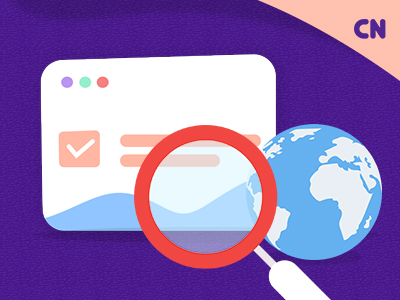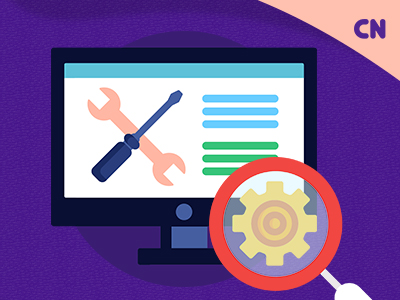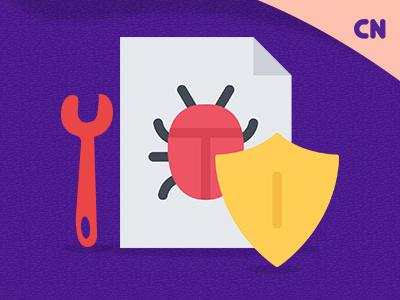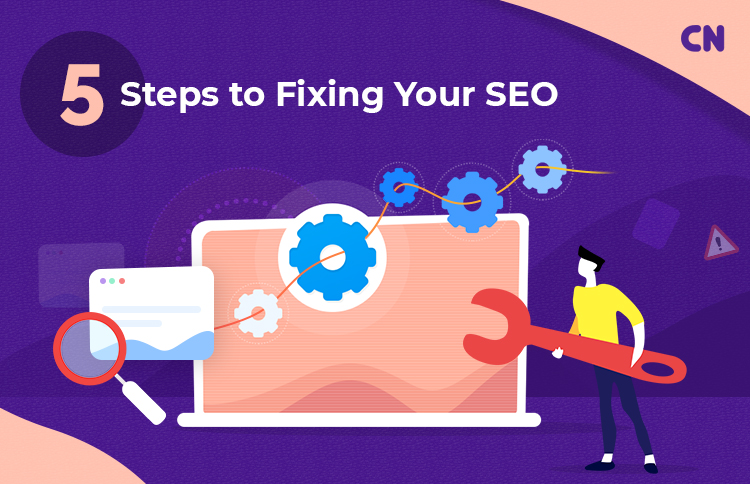Five Steps to Fixing Your SEO
Table of Contents
If your site recently experienced a big drop in search engine traffic, you probably don’t want to waste any time. The opportunity cost is just too high. Sure, you don’t pay for organic traffic the same way you do for paid traffic, but in terms of missed opportunity and losing out on sales, an SEO malfunction is pretty costly.
Getting back on top should be your first priority. If it is, then don’t worry. You’ve come to the right place. A drop in the rankings is fixable, even if it seems really bad at first.
Now, search rankings are notoriously difficult and slow to pull off… so the sooner you get started, the better. However, if you don’t have an SEO expert on hand to deliver results, you might have to do it yourself.
Because doing it all yourself is slow, tedious, and unrewarding if you have to learn on the go, we put together this 5-step guide to speed things along.
So if you need to fix your SEO right now, keep reading…
Step One: Check Your Website

First, go to your website and just make sure it’s working correctly. This may seem basic, but if you skip this step and it turns out the problem IS your website, you’ll have wasted a lot of time & effort focusing on other things. If your site isn’t working properly, nothing else is going to work, either.
If your website is down, check with the webhost first. A lot of the time, the webhost has simply experienced a malfunction and doesn’t display your site. So that’s a good first place to check. Also, check to make sure the pages are loading, the domain hasn’t expired, or something similar.
Changes to the backend may make the site less attractive to the algorithms. New plugins or plugin updates, a change in theme, and URL structure changes can all affect your SEO score and cause your rankings to fluctuate. For example, something as simple as accidentally checking/unchecking the box for search engine visibility will lead to nonexistent rankings.
Step Two: Check Your SEO Tools

Is traffic actually dropping, meaning your SEO is broken… or are your tools simply under-reporting? There are plenty of good SEO tools on the market, but they aren’t all 100% accurate all the time.
It’s time to hop over to Google analytics and see if the traffic is actually dropping or if it’s being underreported. Remember: consistent fluctuations are okay… but a steep drop that bottoms out is not.
If you have Google analytics hooked up properly, it will also notify you if something is wrong or if someone has reported/flagged any of your site’s pages.
It’s also good to stay current on Google’s constant updates. When the search engine updates, it might change the way it indexes your site, leading to drops— or possible rises — invisibility.
Step 3: Get Clear About the Problem

Once you’ve identified that it isn’t a fluke or a glitch or one of your tools not working, it’s time to narrow down the specific cause. Figure out what dropped exactly… was it a certain page or multiple pages? Did you suddenly stop ranking for a certain keyword? What time did your ranking start to drop? Did you make any significant changes to your backend during that time? Were there any Google updates?
Sometimes what appears to be a “drop” is really just the result of a competitor outranking you on Google. They may be outperforming you in terms of backlinks, in terms of content, or in terms of the quality of their pages. If you know that a competitor has recently “ramped up” their SEO efforts, they might be taking all your traffic. That’s okay… it just means it’s time to get serious about your SEO and start consulting with dedicated SEO teams.
Finally, don’t forget the business cycle — seasonal businesses like gyms will experience an explosion of interest around the New Year due to everyone’s resolutions, followed by a steep drop in interest afterward.
Step 4: Fix The Problem

- Check for lost backlinks
Sometimes authority sites go down or clean out their pages. When that happens, you won’t necessarily be notified — your first warning will be in a visibility drop. If this has happened to you, you might have to reach out the page publisher to see about the possibilities of restoring your link.
- Double-check for spam backlinks
The way the algorithm identifies spam varies. First, it places special suspicion on links from China, Russia or any place where links are easily “farmed.” Your site should be somewhat related to the site providing the backlink. For example, if you’re a local gym, it looks suspicious to have too many links coming from sources completely unrelated to health and fitness. In general, shoot for more natural / in-content links and build out a lot of proprietary content — stay away from any links that aren’t relevant or are there solely to boost your ranking.
Be aware if the search engines find out that you have too many links coming from a single IP, they could drop your ranking. Likewise, keep the ratio of backlinks and domains proportional. Generally, you’ll have more backlinks than referring domains, but the disparity should not be extreme enough to catch the attention of the algorithm
- Make sure your site is actually SEO optimized
For example, it’s no longer enough to just create low-value content stuffed full of keywords. Search engines are too smart for that. Your content should be at least 1,000 words in length if you are a service provider or an agency. If you’re in e-commerce, fill out your product descriptions as much as possible. Include customer reviews and images, even video, in addition to the product description.
Your site might be under-optimized. If you don’t have the keyword that you want to rank for in the text of the page, search engine algorithms won’t rank that page.
Similarly, you may have actually “over-optimized” your site. If you did your SEO yourself, you might have been tempted to cram as many keywords into the page as possible. As we’ve already established, doing this will actually hurt your ranking.
Step 5: Prevention

How can you prevent your SEO from tanking in the future, or make sure you’re always upgrading it? After all, briefly dropping is no big deal. But suffering a sustained drop which takes a long time to fix will certainly affect your traffic and your bottom line — especially if your SEO is a major source of your traffic.
First, make sure your SEO work is consistent. You don’t have to devote a lot of time and effort to it. Steady, monthly effort to keep your links up to date and to continue to build your SEO will go a long way to preventing the sort of sudden, drastic drops that prevent visitors and sales.
Second, read up on SEO best practices. A lot has changed in the past ten years. Algorithms are smarter and marketers have to adapt. For example, it’s no longer enough to stuff your content full of keywords and hope for the best. SEO experts are highly paid for a reason – they come with specialized knowledge and a whole host of tools designed to make your SEO as effective as possible.
Third, look into hiring a dedicated SEO expert. If you haven’t or if you don’t want to, then SEO (and marketing in general) will continue to feel out of your control. Bringing on a dedicated SEO expert is the best way to turn your search engine traffic into a steady stream of leads.















